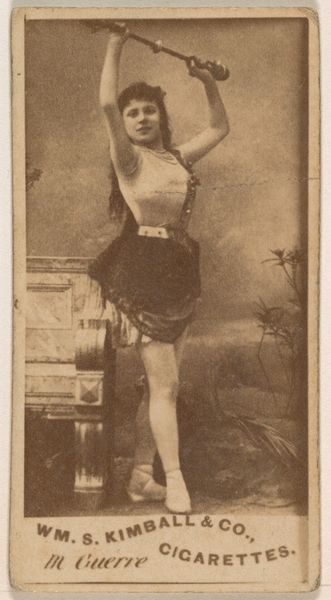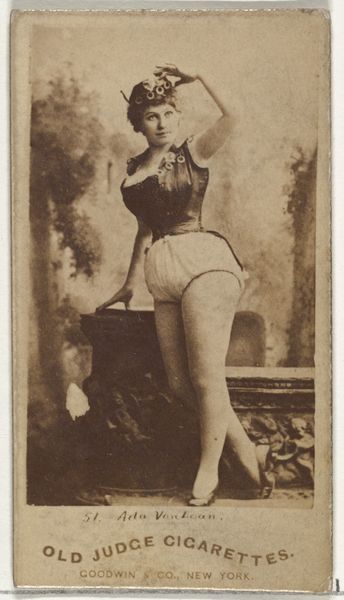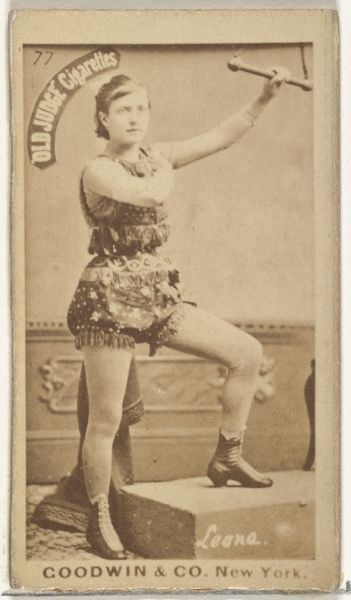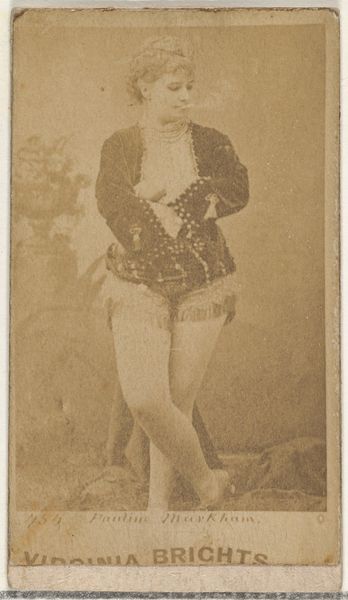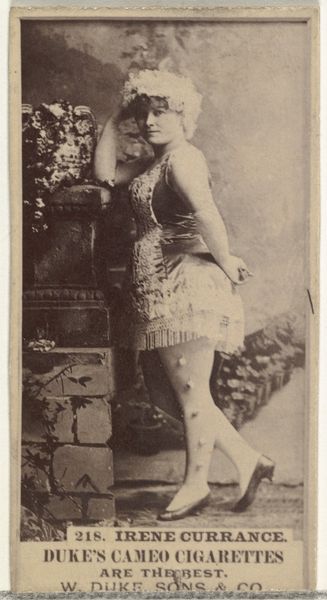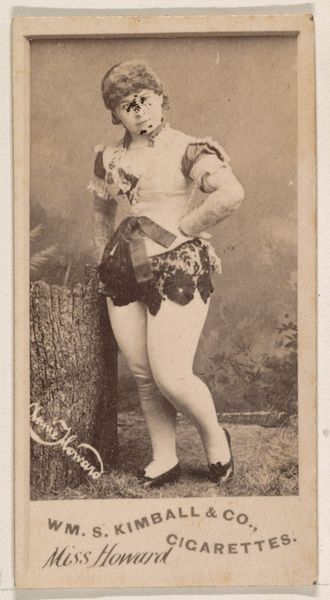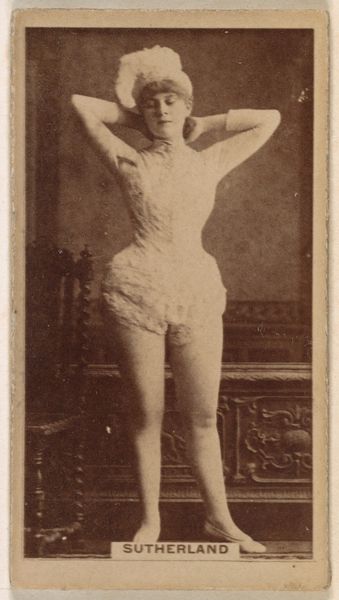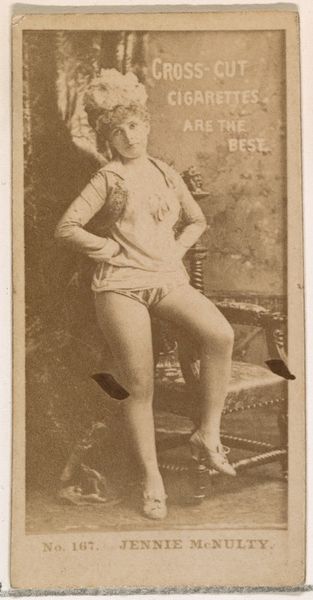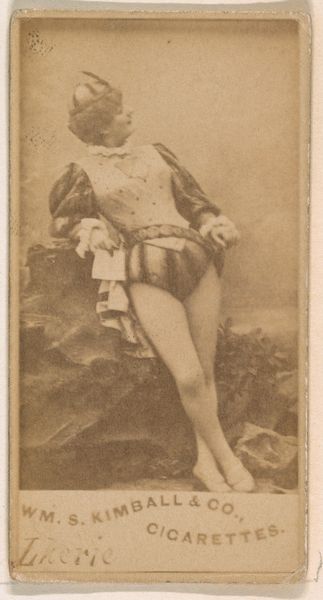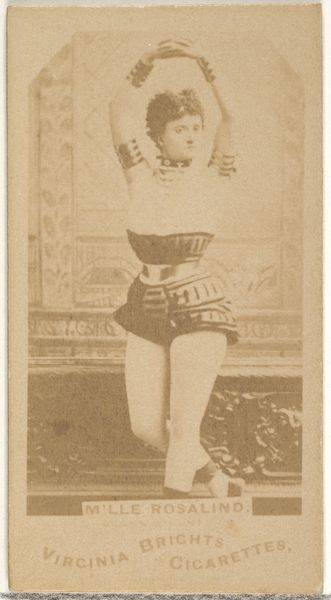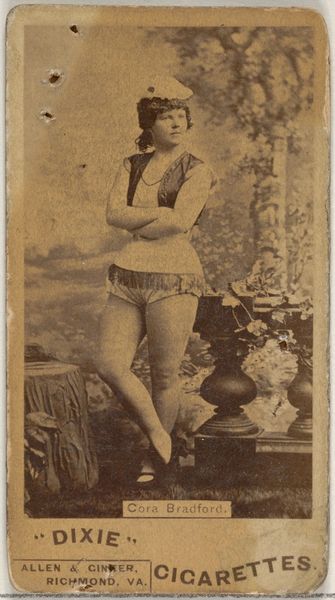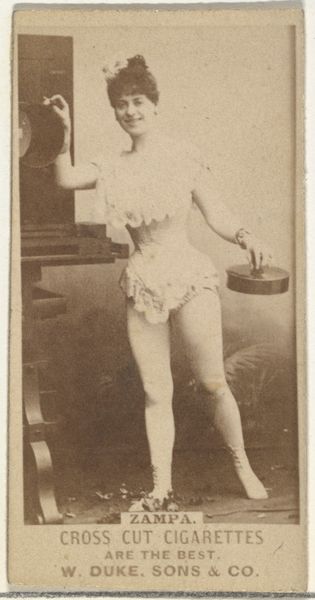
Miss Dashwood, from the Actors and Actresses series (N171) for Old Judge Cigarettes 1886 - 1890
0:00
0:00
drawing, print, photography
#
portrait
#
drawing
# print
#
photography
#
genre-painting
Dimensions: sheet: 2 11/16 x 1 3/8 in. (6.9 x 3.5 cm)
Copyright: Public Domain
Editor: So, this is "Miss Dashwood, from the Actors and Actresses series," made by Goodwin & Company between 1886 and 1890. It’s a print – probably a photograph reproduced for Old Judge Cigarettes. There's a striking confidence to her pose; almost defiant, I would say. What symbols or messages jump out at you? Curator: Immediately, the costume signals a performative identity. Notice the frogging on her uniform - not inherently masculine, but visually associating her with roles of power or authority, or at the very least spectacle. Do you get a sense of what type of role she plays? Editor: It does give a slightly masculine impression, almost military with the frogging... But, it is hard to tell. Curator: Precisely. This tension - between the overtly feminine presentation and a costume borrowed from a traditionally male domain - is central. Cigarette cards like this played on anxieties surrounding changing gender roles, presenting actresses as both objects of desire and figures of independent agency. Editor: That is a good point about how she both reflects and disrupts convention! How does it relate to "Old Judge Cigarettes?" Curator: The image subtly links "Miss Dashwood's" alluring image to the consumption of the cigarettes, implying a connection between female empowerment and the product, playing to a market eager to embrace a changing, albeit ambiguous, social landscape. What kind of legacy does this suggest? Editor: It’s fascinating how it uses this emerging symbolism and commodifies it, almost turning her persona into a desirable trait the consumer can embody through purchasing a cigarette. Very cunning! Curator: Cunning indeed, and deeply embedded in the social anxieties and aspirations of the late 19th century. Food for thought!
Comments
No comments
Be the first to comment and join the conversation on the ultimate creative platform.
